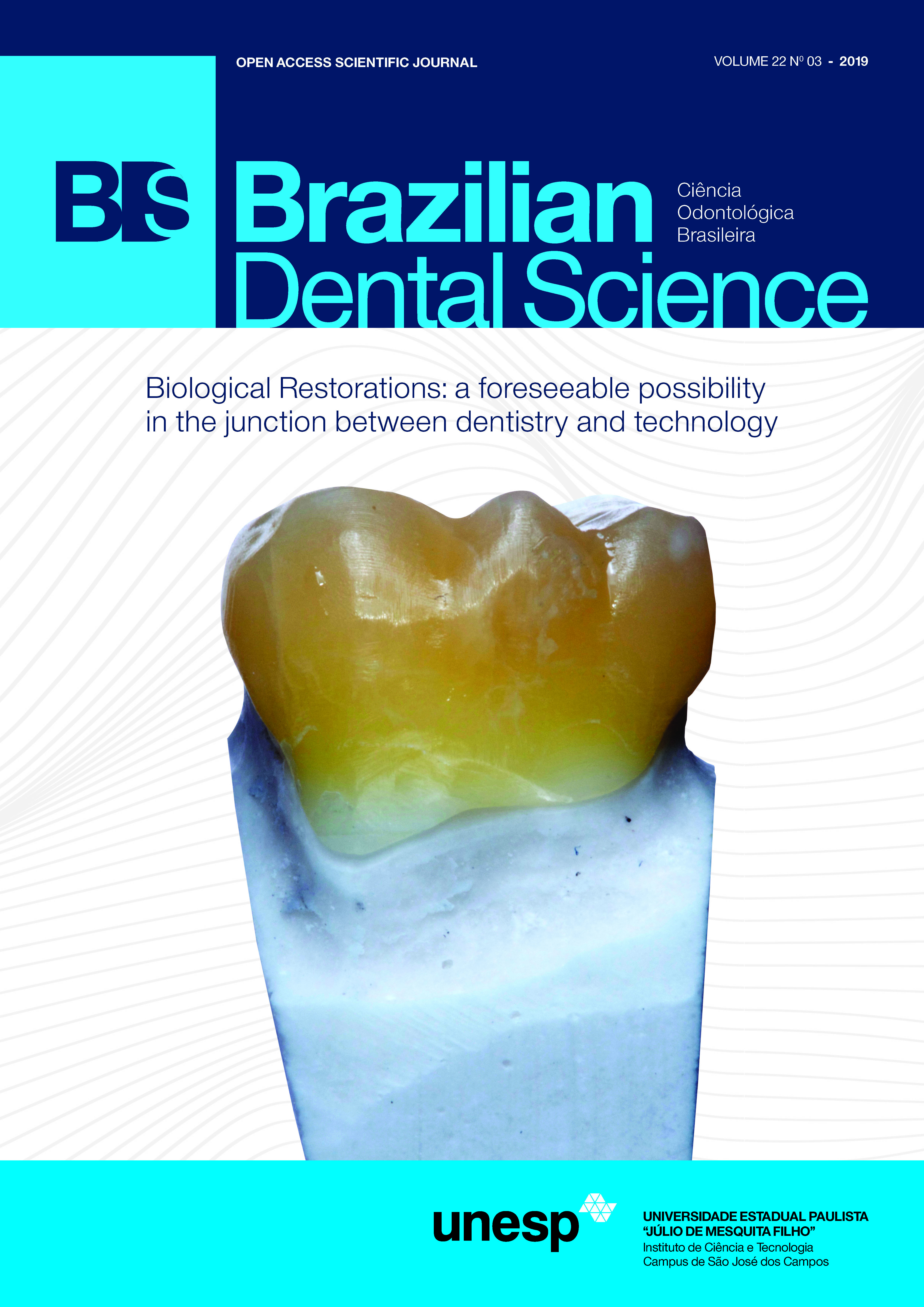How do the optical properties of the bulk fill posterior composites change after 2 years of simulated toothbrushing?
DOI:
https://doi.org/10.14295/bds.2019.v22i3.1752Resumo
The objective of this study was to evaluate the alteration of the optical properties of bulk Fill resin-based composites after 2 years of simulated toothbrushing. Three high-viscosity bulk fill resin composites and one conventional sculptable resin composite (control) were analyzed. Five specimens of each resin composite were prepared, and roughness, color, translucency and gloss were evaluated initially and after one and two years of simulated toothbrushing. The specimens were submitted to electric simulated toothbrushing (14600 strokes/100g) using a commercially available toothbrush with soft fibers and toothpaste slurry in a proportion of 1:2 by weight. The brushing scheme was of 40 cycles per day (2 cycles per second / 280 cycles in a week). The optical properties and the roughness data were analyzed by a multifactor analysis of variance (MANOVA) and a Tukey post hoc test. The baseline and final values of Ra and Sa were submitted to linear regression analyses, all of which were performed at a significance level of p=0.05. Gloss and roughness presented statistical differences between the resin-time interactions in all composite resins. The gloss (72.5%) and roughness (89.4%) worsened significantly after brushing, but the authors didn’t find statistically significant differences when evaluating translucency and color. Based in the results, it could be concluded that the simulated brushing degraded the brightness and roughness of the used high-viscosity bulk fill composites.
Downloads
Downloads
Arquivos adicionais
Publicado
Como Citar
Edição
Seção
Licença
TRANSFERÊNCIA DE DIREITOS AUTORAIS E DECLARAÇÃO DE RESPONSABILIDADE
Toda a propriedade de direitos autorais do artigo "____________________________________________________________________" é transferido do autor(es) para a CIÊNCIA ODONTOLÓGICA BRASILEIRA, no caso do trabalho ser publicado. O artigo não foi publicado em outro lugar e não foi submetido simultaneamente para publicação em outra revista.
Vimos por meio deste, atestar que trabalho é original e não apresenta dados manipulados, fraude ou plágio. Fizemos contribuição científica significativa para o estudo e estamos cientes dos dados apresentados e de acordo com a versão final do artigo. Assumimos total responsabilidade pelos aspectos éticos do estudo.
Este texto deve ser impresso e assinado por todos os autores. A versão digitalizada deverá ser apresentada como arquivo suplementar durante o processo de submissão.




























